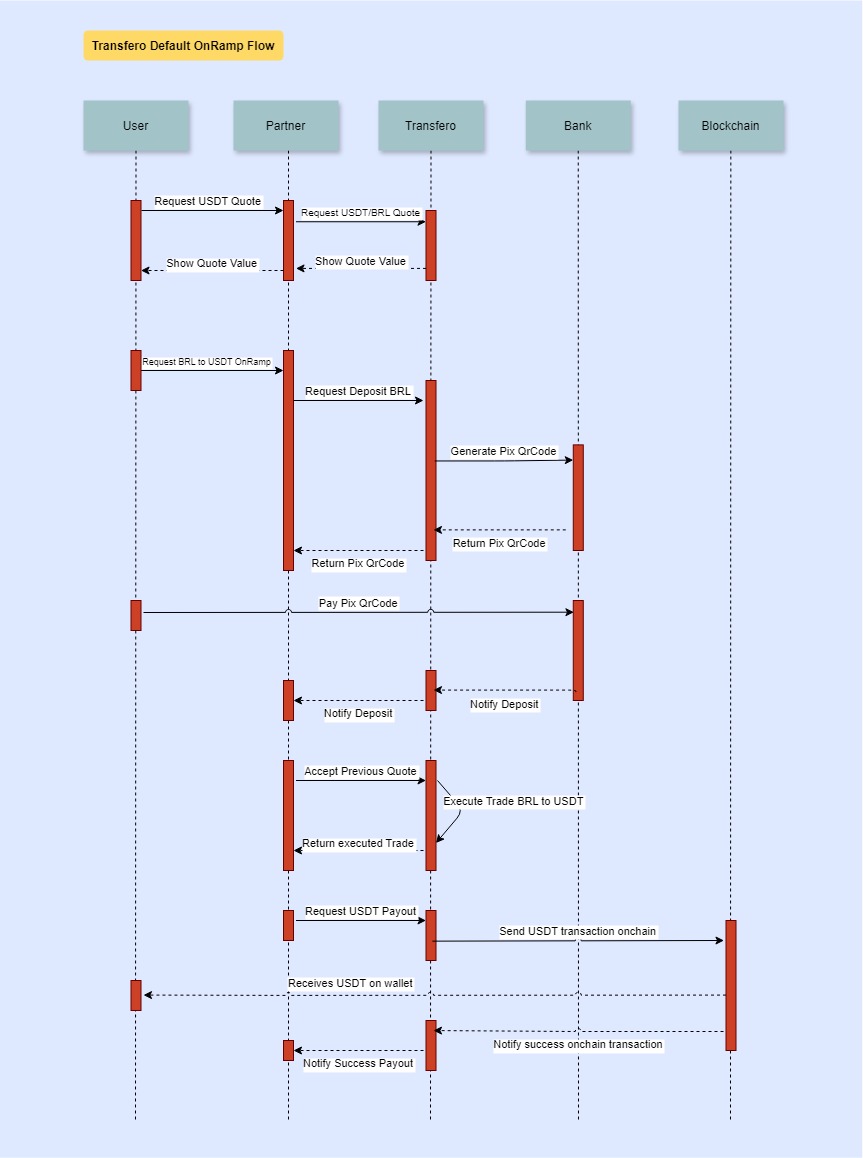Overview
Basically, the ramp process is a set of internal processes aimed at converting fiat money into cryptocurrency or vice versa, or performing operations between fiat money and cryptocurrency.
The ramp process is orchestrated by the swap order entity and offers three types of operations: On-Ramp, Off-Ramp, and Checkout.
On-Ramp
The term "on-ramp" is commonly used to describe the onboarding of new investors or users into the cryptocurrency ecosystem. This process typically involves using exchange platforms that allow people to buy and sell cryptocurrencies with fiat money, such as dollars, euros, and others, making it easier for users to enter the world of crypto investment.
This technique is essential for attracting new clients to use cryptocurrency in their daily lives, making it easier to understand and integrate into their routines.
In our case, we use this term similarly. The client deposits an amount in fiat money, we convert it into cryptocurrency, and create a withdrawal operation to the previously provided target wallet.
Off Ramp
Using the term "On Ramp" as a reference, the off-ramp is the exact opposite. While the goal of the on-ramp process is to convert fiat money into cryptocurrency, the off-ramp process aims to convert cryptocurrency into fiat money. Essentially, in this process, cryptocurrency is received as input, we process and convert it into fiat money, and then initiate a withdrawal to a previously provided target, such as a PIX transfer, for example.
CheckOut
Finally, the checkout process is similar to the on-ramp but without the withdrawal step. Essentially, we perform the entire on-ramp process, but the currency remains within the user's Transfero account.
Why use ramp flows?
As you can see, the ramp flow can be implemented by the partner using various endpoints and orchestrating the process independently. However, this approach may require additional steps and introduce complexities that the ramp flow is designed to simplify. That being said, the "common flow" (orchestrated by the partner) is not inherently less effective or unsuitable in all cases. In certain scenarios, having complete control over the process may be more advantageous for the partner. Therefore, it is essential to analyze and determine which approach aligns best with your integration needs.
In the charts below, we illustrate how the ramp flow manages these additional steps, while highlighting certain areas in the common flow that may require more careful attention.
The "Common flow":

The ramp flow:
